This Sourdough Starter is pretty darn easy to do and a great option for delicious homemade baked goods! A sourdough starter doesn’t have to be a chore, and the end result is worth the patience in the beginning. If you like homemade treats try my Sourdough Pretzels!
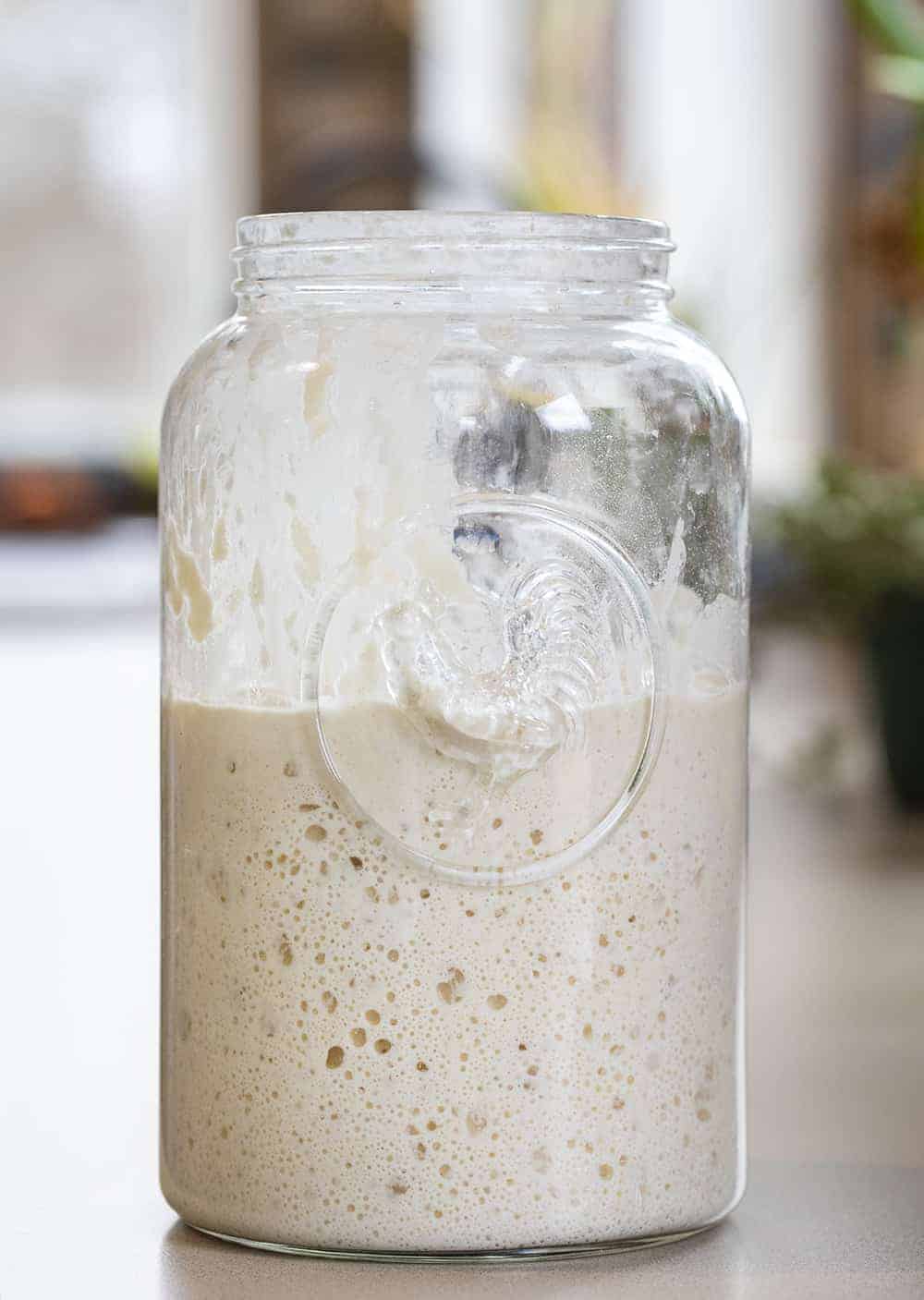
Sourdough Starter
I have to start out by saying that this is how *I* do a starter. I have watched every expert under the sun and read every book and let me tell you something… they are all different. So I have been testing and testing and retesting and using life experience to determine what works best for me. Well, I finally decided on what worked best for me, and it could not be easier and straight forward. The ingredients are simple: flour and water. And, with just two measurements to remember, the feeding is a piece of cake (or should I say bread😉) as well!

Getting your Sourdough Starter Started
Now if you want to bring science into it, the type of flour and type of water you use are important. They can produce a better product. But I am here to tell you that you can absolutely use all-purpose bleached flour from Dollar General and it will still be ok. Make sure you have the following materials and ingredients on hand:
- Jar & Lid – I prefer glass, you don’t want to use metal or plastic. If you don’t have a lid use a paper towel and rubber band. A good size jar to have on hand for a sourdough starter is a quart (32 ounces) or something close to that capacity.
- Flour – I prefer organic unbleached all-purpose, but also love whole-wheat and bread flour. Or, give rye flour a try.
- Water -Purified is best. Have chlorinated tap water (as most people do)? You can use bottled water or just set the water out uncovered for 24 hours before using it to feed your starter. This allows the chlorine to evaporate so it won’t kill the wild yeast.
That’s it for supplies! Now, let’s get to making the starter.
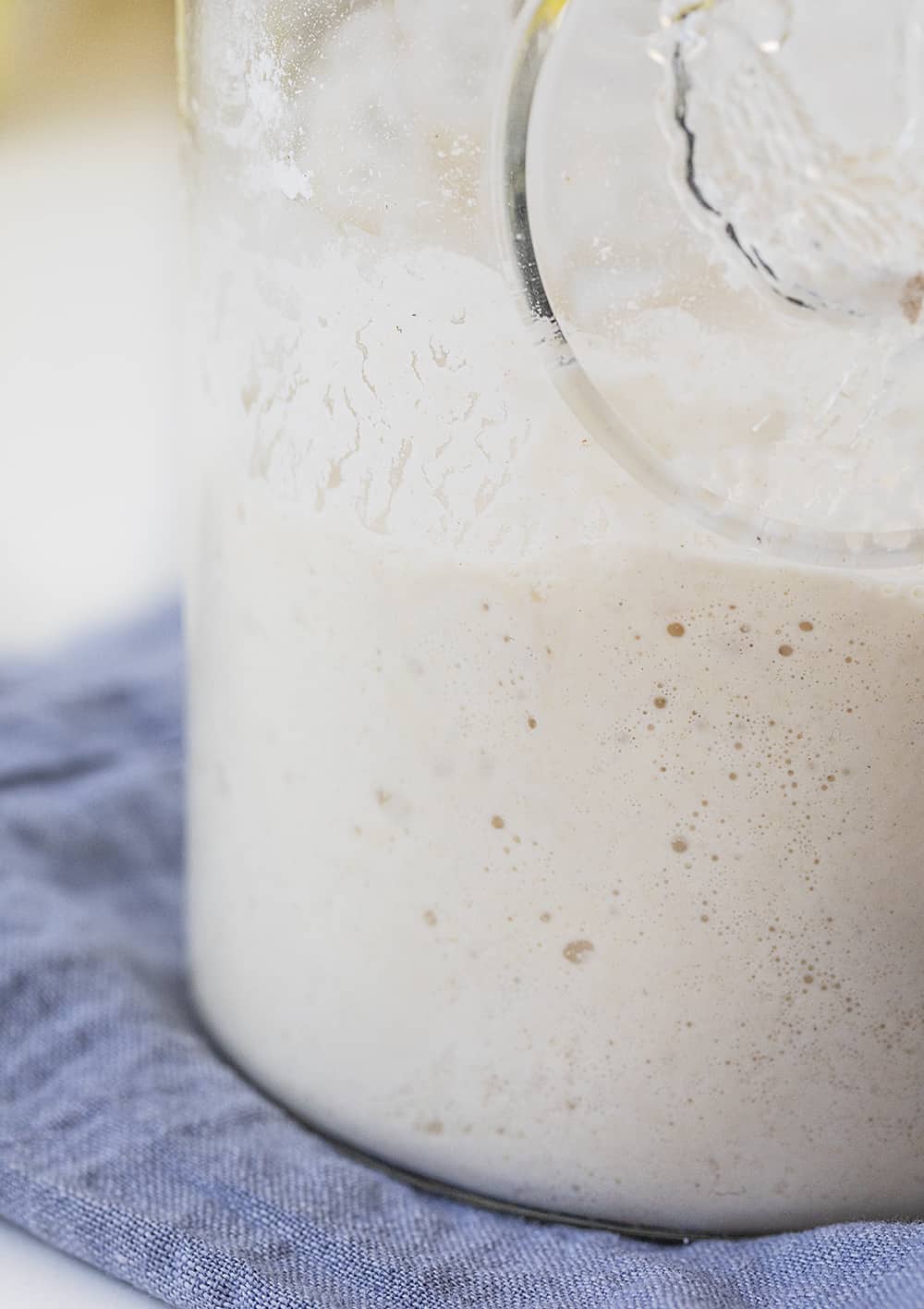
How to Make a Sourdough Starter
Remember these amounts: 1/2 cup flour and 1/4-1/3 cup water. These are the only measurements you will need to remember throughout this entire process of creating your sourdough starter. And trust me, you will use those measurements a lot with all the ‘feeding’, going on! After all, the goal is to get those microorganisms to work for that sour and fermented flavor that sourdough is known for.
To begin, add the flour and water to a jar and stir well. Try not to use a metal spoon. After all, Grandma said she always uses the handle of her wooden spoon to stir. Now gently cover the jar (do not seal it closed) and let it sit in a warm place (70°F is best) for 24 hours. The best option for a cover is a paper towel and rubber band. Or, just remember to keep the jar lid loosely sealed. Try to keep it in an area of your house that is somewhat warm. Very cool rooms tend to slow the action of a starter. Wait 24 hours before checking the mixture.

‘Feeding’ the Sourdough Starter
With sourdough starters, you will hear the term ‘feeding’. This is simply adding the flour and water to the mixture to keep the microorganisms working. Remember the measurements I told you to get ingrained in your brain? The 1/2 cup flour and 1/4-1/3 cup water is all you will need throughout the ‘feeding’ process.
Day 2: After 24 hours, check the mixture for bubbles. If you see bubbles, add the flour and the water, mixing it well, and let it sit for the next 24 hours. If you don’t see bubbles, do not get discouraged! It sometimes takes a couple of days for the science of it all to work. Just wait another day (or even two) until the first feeding.
Day 3: After another 24 hours, check for bubbles. If you do see bubbles, remove half of the starter, add the 1⁄2 cup flour and 1⁄4-1/3 cup water and stir thoroughly. Let sit 24 hours. Oh, and don’t get rid of the starter you removed! I will give you some ideas on how to use this in the end.
For the third feeding, remove half of the starter (but don’t throw it out!), and feed with 1⁄2 cup and 1⁄4 cup water, stirring thoroughly. Let sit 24 hours. (And yes, you can begin a new starter with the discard! Try adding a new kind of four! Or simply use to make crackers or pancakes.)
On days 4, 5, 6 you can feed it 2 times a day with those measurements that are sure to be memorized at this point😀. Continue this routine (discarding before feeding) until the starter is consistently bubbling and doubling in size within 8 hours of each feeding.
It is now ready to use for a perfect Sourdough Bread!
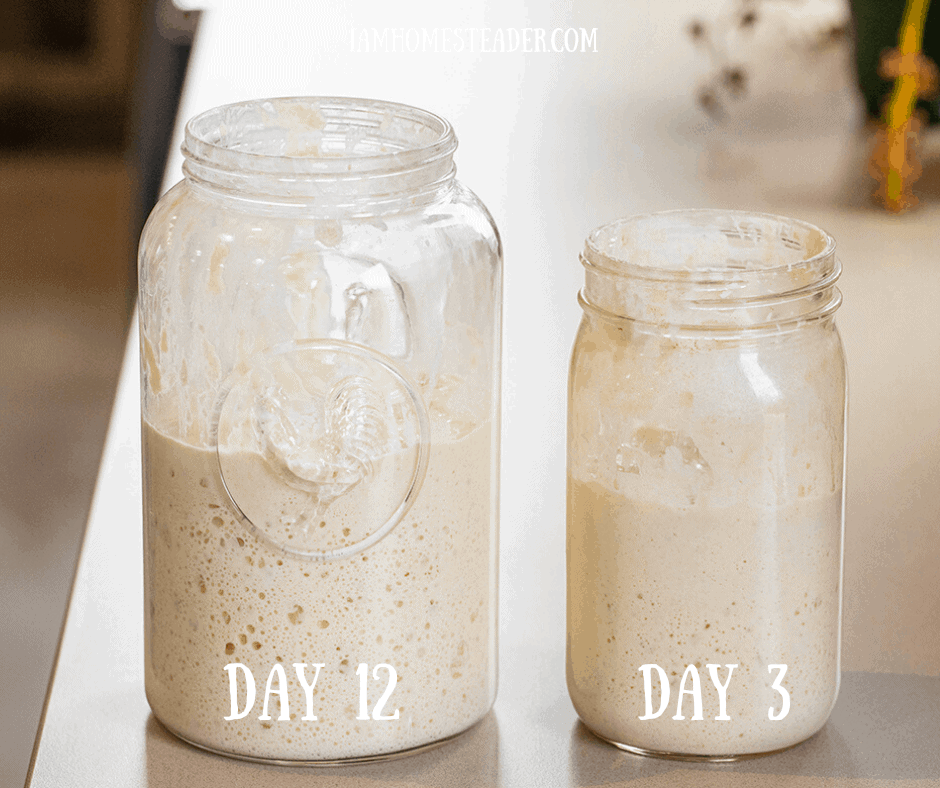
How to Store a Sourdough Starter
After all the feeding and you know you have a strong, active starter, you can store the starter in the refrigerator and feed it about once per week. When you plan to use the starter, pull it out of the refrigerator 24 hours in advance to feed it and allow it to warm up and grow.
These starters get better with age, so don’t think you have to use it right away! Sourdough starters are hearty, so they last quite a while. But, like all living things, it can get ‘sick’ or go bad. If it turns pink, red, moldy, or gets a really putrid smell, throw it out. After all, you now know how to start again!
What Flours Can You Use in a Sourdough Starter?
All grain-based flours will work beautifully in a starter. A few examples are:
- Rye
- Bread Flour
- Rice
- Whole Wheat
- Einkorn
Truesourdough.com has a great comprehensive guide to flours.
Vanilla and Bean has a great guide to Gluten-Free sourdough starter.
What to do with the Discard?
As I said, don’t throw out the sourdough starter that you remove each feeding time to make room for the starter to rise. Just make sure your sourdough starter is room temperature (about 70°F) before using it in baking. Here are some ideas on how to use (and enjoy) the excess sourdough starter.
- Sourdough Bread (not until day 6 or 7)
- Sourdough Pancakes (seriously SO GOOD!)
- Sourdough English Muffins
- Sourdough Brownies
- Sourdough Pretzels
- Cinnamon Rolls (the best!)
- Banana Bread
- Sourdough Crackers (like saltines)
- Sourdough Chocolate Chip Cookies
- Sourdough Pasta Noodles
As I mentioned, this is how *I* make a starter. King Arthur recommends 1 cup flour and 1/2 cup water and they suggest you weigh ingredients with a scale. (This is the same equivalent that I use, just doubled.) Pro Home Cooks has a great free downloadable Sourdough guide for those who really want to understand the science behind it.
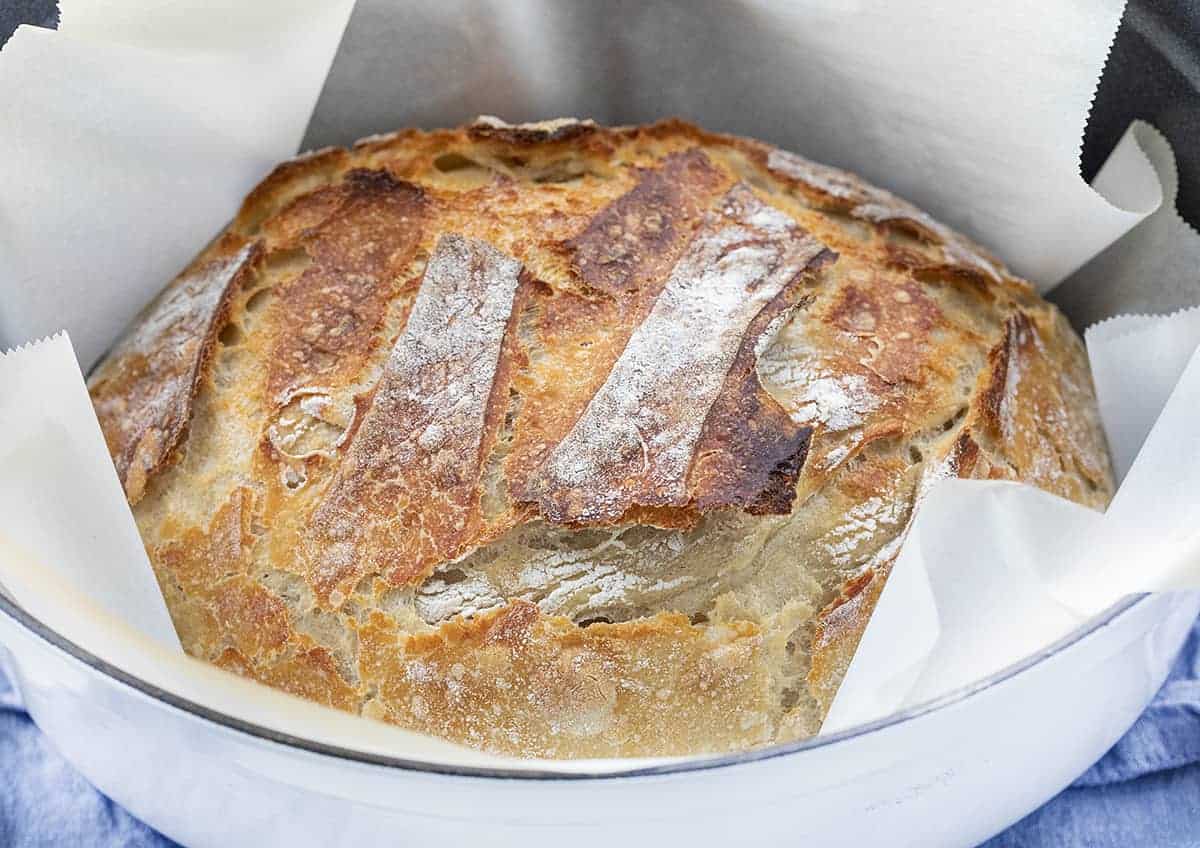
Here is the recipe for Simple Sourdough Bread!
More Sourdough Recipes

Sourdough Starter
Ingredients
- ½ cup flour, whole wheat or unbleached all-purpose
- ¼-⅓ cup water*, 75°F is ideal
- 1 glass jar, or bowl (about 32 ounces)
- 1 paper towel
- 1 rubber band
Instructions
TO BEGIN
- Start the process by adding ½ cup whole wheat flour and ¼ cup water to the jar. (If you need more flour to reach a pancake batter consistency, you can add up to ¼ cup more.)
THE FIRST FEEDING
- Stir thoroughly and cover with a towel and rubber band. Let sit for 24 hours at room temperature. (Try to keep it in an area of your house that is somewhat warm. Very cool rooms tend to slow the action of a starter.)
- After 24 hours, check the mixture for bubbles. If you see some, add ½ cup all-purpose flour and ¼-⅓cup water. If you don’t see bubbles, give it a stir and let sit 24 more hours.
THE SECOND FEEDING
- Check for bubbles again. If you do see bubbles, remove half of the starter, add ½ cup all-purpose flour and ¼-⅓ cup water and stir thoroughly. Let sit 24 hours.
THE THIRD FEEDING
- Remove half of the starter, and feed with ½ cup all-purpose flour and ¼ cup water, stirring thoroughly. Let sit 24 hours.
ADDITIONAL FEEDINGS
- On days 4, 5, 6 you can feed it 2 times a day, if you want and plan on using it.
- Continue this routine until the starter is consistently bubbling and doubling in size within 8 hours of each feeding.
- From this point (or even on day 5), you can store the starter in the refrigerator and feed it about once per week. When you plan to use the starter, pull it out of the refrigerator 24 hours in advance to feed it and allow it to warm up and grow.
Video
Notes
Did you make this recipe?
You can tag me at @iamhomesteader.
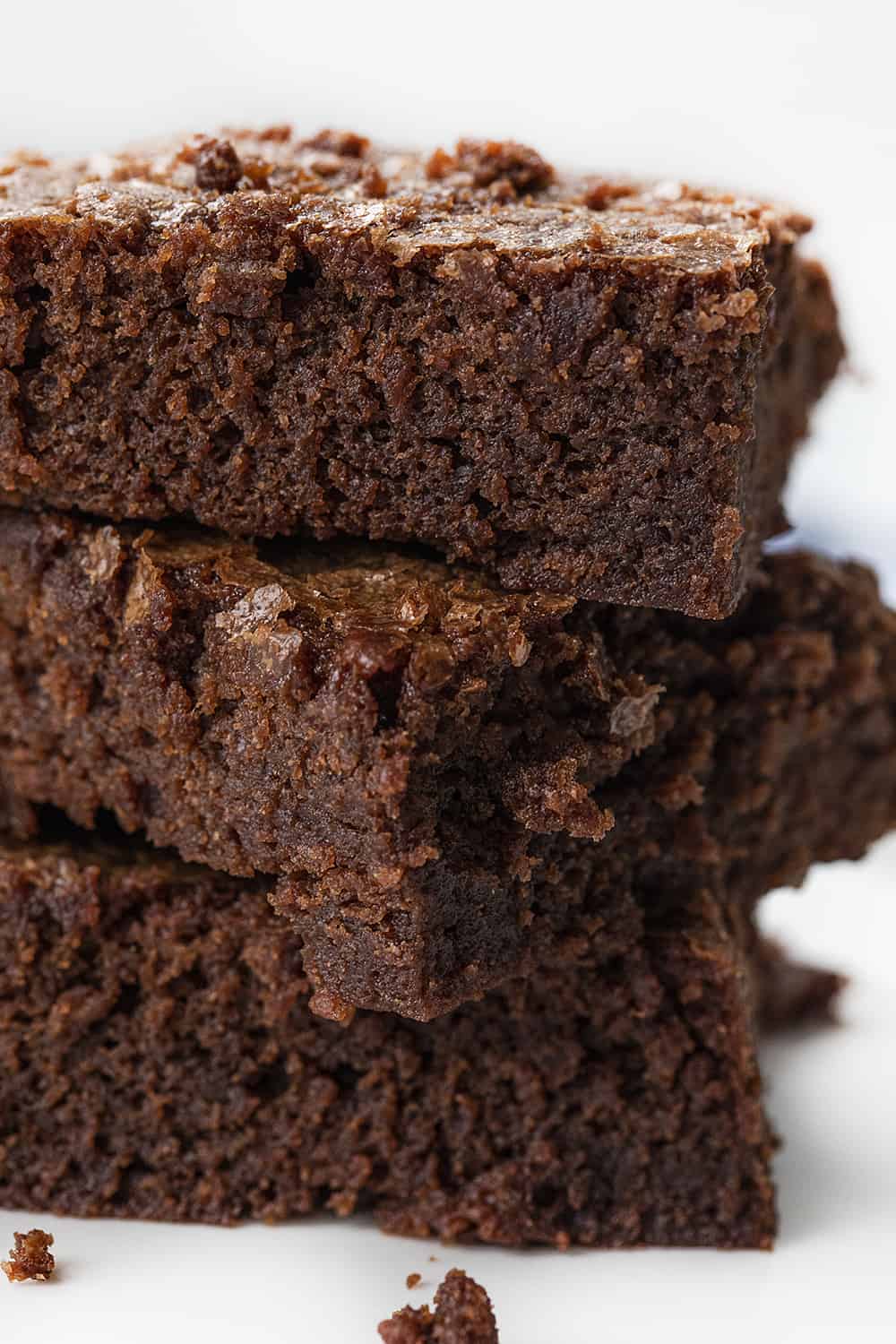
I used this starter to make seriously decadent Chocolate Sourdough Brownies!
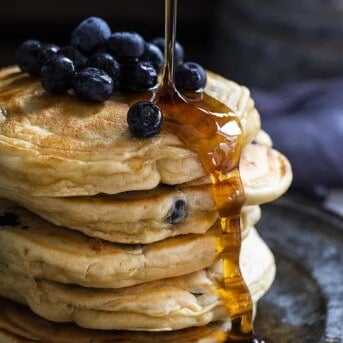
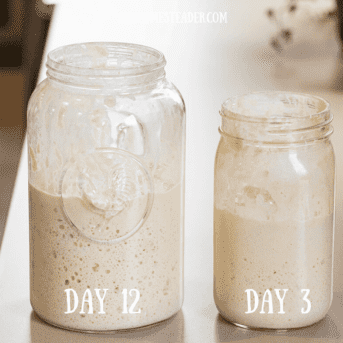
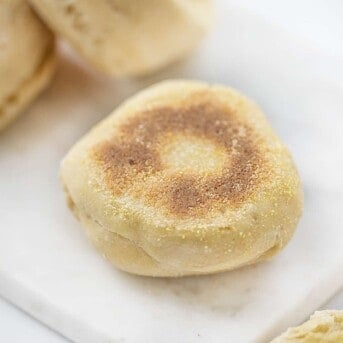
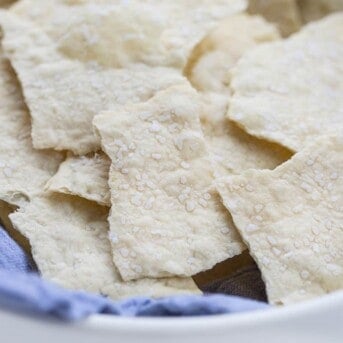
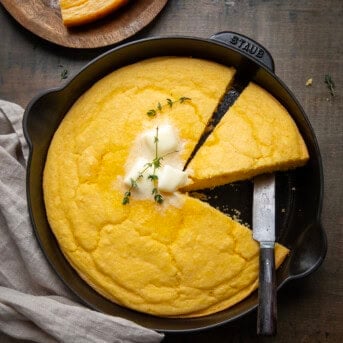


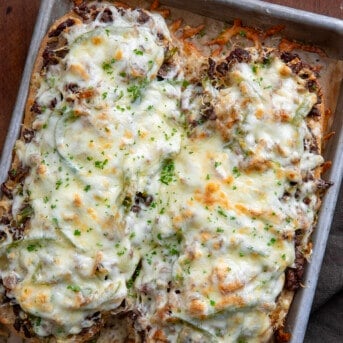
One thing everyone seems to leave off their recipes is, @Do you use the entire starter or 1/2 to make a loaf of bread on the 6 th day? Should you start another batch about every 3 days?
can can I use gluten free flour?
Hi Davina! I just happened to come across your comment and had to stop. I made this recipe this past weekend, one with a/p flour and one with King Arthur gf flour. The gf batch is AMAZING!!! It’s actually doing better than my a/p one! I just made gf brownies and a gf pumpkin bread with it yesterday and they are incredible. So yes, you can absolutely make it gf. (Just be sure to use a gf flour with xantham gum).
I’ve noticed that most everyone’s questions are going unanswered, I’m growing my starter according to directions but I’m stuck wondering if I can start another starter with the discard after the 7th day. So, this may sound like I’m simple but… Also after storage in the fridge, when feeding once a week; do I leave it on the counter at room temp, feed it, let it rise, and then put it back in after removing half? Also, I assume it is tightly capped with a plastic lid in the fridge… Just wondering.
This is super helpful! I have been wanting to try to make my own sour dough so I am glad I found your site on Pinterest! 😊❤️
Hello! I just found this video which was very awesome! I however, forgot to make a discard on day 4 or 5 and just added to it. Whoops! Can I still try and bake this? What temperature and how long do you bake this? Thanks!
do you use warm water
Hi!!! So my sour dough starter is ready, it grows, it floats…. I made two jars one to save (discard and feeding weekly right????) and one to use possibly right away. Can I store in fridge? With tight lid (mason jars)? How long to make it more sour in fridge? Do I have to feed it before cooking with it or can I feed it after I use what I need ???
Thanks
on days 4 5 and 6 do I discard or just keep feeding it?
Yes please! Do we discard on days 4, 5 and 6?
I just found this recipe and was excited to try it since my first batch of trying a another recipe flunked tragically. I thought I had un bleached flour but don’t . All I have is all- purpose and all all purpose bread flour would either of those work just as well ? My husband is eager for me to get started he lives sour dough bread
Yes, you can use the flour you have. Just keep a close eye on it!
Do you just throw away the 1/2 starter that you remove? What do you do with it?
Would love to know the answer to Rhonda’s question??
Hello. Wonderful recipe! I’ve started the starter and it’s doing well I think. Can you please tell me if I use whole wheat flour, will they work for the sourdough bread recipe too? Thank you so much!
Yes, it will!
i have a question pls.
During the 3rd feeding: When removing 1/2 of the starter, what do I do with the 1/2 that I remove? Does this become a new starter or is it waste?
Thanks!
Rhonda
I was excited because on the second night my start doubled. Then the next morning the starter went down to the original amount and hardly any bubbles. It also didn’t smell very good. So I threw it out. I don’t know if there was anyway I could have saved it.
Mine did the same thing. Last night it was 3/4 way up the jar. When I got up this morning it was back down to where it was when I added the feed. Anyone know what to do or should I toss and start over?
This was so easy to make! I even made it gluten free with King Arthur 1:1 gluten free flour. It is happily growing after 2 weeks.
Years ago I had a recipe for Bran Muffins using a sourdough Starter, but I’ve lost it. It made the absolute best muffins ever. Would you have such a recipe? Every morning I could have fresh sourdough muffins.
Finally! A sourdough starter recipe that’s easy to understand. After which day is best to use the starter?
I’m hoping for some guidance. I started this recipe a few days ago. The second day, after the feed, the thing doubled in size. Was super happy. Now on day 3 and there’s some bubbles, but nowhere near the same. I dk what I’m doing wrong. I should add this is my 2nd time trying to get a starter going. I used a different recipe the first time, but with the same result.
So, for the first 6 days do you just throw the discard away or is it usable??
I’m on day 5 of my starter and all I see are some bubbles. I am following the directions exactly and no real results???
Any chance you have a delicious whole grain sourdough bread recipe using this?
IN THE PAST AND PRESENT I HAVE HAD ABSOLUTELY NO LUCK MAKIN SOURDOUGH STARTER.
I HAVE USED THE PACK OF YEAST, WARM WATER, SUGAR AND MASHED POTATO FLAKES, SOMETIMES IT WORK’S BUT MOST THE TIME NOT.
Brilliant! Thank you so much, your intuitive recipe encouraged me & now 7 days on I have my first sourdough starter (Evie) ready to go.
I’m on my 5th day and it’s not doubling. It has bubbles but it’s staying the same amount after I discard and add the new. . What am I doing wrong?